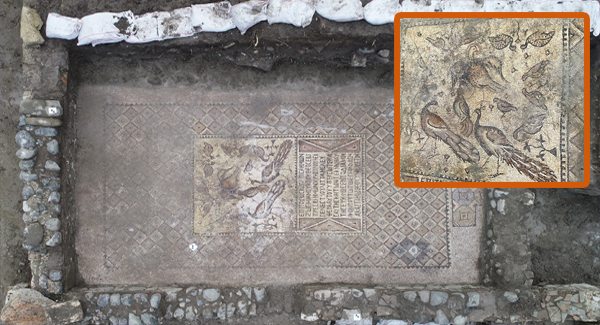To use the Book of Enoch as a guide for life, you must overlook parts that seem unclear or contradictory. The question remains: why was this book removed from the Bible? It contains lessons embedded in its myths, likely holding fragments of truth. The Book of Enoch is one of the most enigmatic ancient texts, filled with startling stories of fallen angels, giants, forbidden knowledge, and apocalyptic visions. Enoch is portrayed as a significant figure in the Bible, yet his book was excluded from the canonical scriptures. Recently, it has regained attention, even appearing in discussions on the Joe Rogan Experience. Why did the Vatican reject this text, and what insights has AI revealed about its true meaning?
The Book of Enoch
The Book of Enoch is an ancient Jewish text once revered by certain groups but later dismissed by mainstream Jewish and Christian traditions. While not included in the Hebrew Bible or most Christian canons today, it continues to captivate historians, theologians, and those intrigued by biblical mysteries. Scholars date its various sections to between 300 BC and 100 BC, a period of diverse religious ideas among Jewish communities. The text is most fully preserved in the Ethiopian Orthodox Church, where it is considered canonical and referred to as 1 Enoch to distinguish it from later related works. While Western Christian and Jewish communities do not regard it as scripture, its acceptance in Ethiopia underscores its significance in one of the world’s oldest Christian churches.
Historically, the Book of Enoch has sparked debate over its origins and legitimacy. Early church fathers like Tertullian and Clement of Alexandria occasionally quoted or respected it. Fragments found among the Dead Sea Scrolls at Qumran, written in Aramaic, confirm its circulation among certain Jewish groups during the late Second Temple period. The text centers on visions and teachings attributed to Enoch, a biblical figure from Genesis who lived 365 years—a shorter lifespan than most patriarchs—and was uniquely “taken by God” rather than dying. This brief reference in Genesis fueled speculation, leading to expanded narratives about Enoch’s divine encounters and fate. As ancient Jewish literature often sought to explain gaps in the Torah or prophetic texts, Enoch’s story inspired works like the Book of Enoch, which explores angels, the cosmos, and the end of days.
The book’s exclusion from mainstream canons may stem from its bold claims about fallen angels, the Nephilim (giants), and advanced knowledge given to humanity. Some argue its messianic references, resembling Christian ideas of Jesus, made it controversial in both rabbinic Judaism and early Christian circles. Nonetheless, it remains a living text in Ethiopia.
Enoch in Biblical Genealogy
In the Hebrew Bible, Enoch appears in the genealogy from Adam to Noah in Genesis 5. As Noah’s great-grandfather, he is part of the lineage tied to the flood narrative. Unlike other patriarchs who lived for centuries, Enoch’s 365-year life and the statement “God took him” set him apart. This phrase, suggesting he did not die but was taken to heaven, inspired speculation that he was a unique figure with a special divine connection. Hebrews 11:5 in the New Testament reinforces this, noting Enoch’s faith spared him from death. Such references fueled myths portraying Enoch as a recipient of divine mysteries, a heavenly scribe, or even an angelic figure. Some traditions link him to Melchizedek, the mysterious priest-king in Genesis, though this connection is debated. Enoch’s story, with its hints of cosmic wisdom and divine favor, made him a natural focus for apocryphal texts like the Book of Enoch.
The Watchers: Origins, Motives, and Impact
A key theme in the Book of Enoch is the story of the Watchers, angels tasked with overseeing humanity but who fell into corruption. Numbering 200 and led by Samyaza, they descended to earth during the time of Jared, Enoch’s father, and swore an oath to defy divine law. Their sins included marrying human women and teaching forbidden knowledge, such as metalwork, cosmetics, astrology, and enchantments. This echoes Genesis 6:1-4, where the “sons of God” produce the Nephilim, described in Enoch as violent giants who consumed resources and turned to cannibalism. This corruption, driven by the Watchers’ teachings, is presented as a cause of the great flood. Archangels like Michael, Uriel, Raphael, and Gabriel intervene, binding the Watchers and warning Noah of the coming deluge. Enoch acts as a mediator, witnessing these events and pleading for mercy, though divine judgment prevails.
The Book of the Watchers
The Book of the Watchers, the earliest section of 1 Enoch, focuses on the fallen angels’ judgment and serves as a warning to humanity. Enoch, a righteous man, receives visions of heaven, learning about the angels’ origins, the cosmos, and the fate of the righteous. He mediates between the Watchers and God, though their plea for forgiveness is denied. This section describes Enoch’s journeys through mystical realms, including places where the dead await judgment and the fallen angels are bound. It emphasizes cosmic order, divine justice, and the consequences of defying God’s law, making it a cornerstone of Jewish apocalyptic literature.
The Book of Parables
Chapters 37–71, known as the Book of Parables, shift focus to judgment, messianic hope, and the end times. A figure called the “Son of Man” or “Chosen One” appears, judging the world from a throne of glory. This imagery parallels New Testament references to Jesus, suggesting possible influence on early Christian thought. The text addresses divine justice for human rulers and the wicked, offering hope to the righteous. Written later than other sections, it reflects the Second Temple period’s concerns about political turmoil and divine intervention.
The Astronomical Book
The Astronomical Book, or Book of the Luminaries, details the movements of the sun, moon, and stars, guided by the angel Uriel. It promotes a 364-day solar calendar, aligning religious festivals with cosmic order. This calendar, also found in the Book of Jubilees, reflects an early Jewish interest in astronomy as a reflection of divine design. The text contrasts lawful knowledge from Uriel with the corrupt teachings of the Watchers, emphasizing the connection between cosmic and moral order.
The Book of Dreams
Chapters 83–90, the Book of Dreams, use allegorical visions to recount history from creation to the Maccabean revolt or earlier, depending on interpretation. Animals symbolize people or nations, with white bulls representing patriarchs and other creatures depicting corrupt groups. These visions assure readers that God oversees history and will restore the righteous, offering hope amid oppression.
The Epistle of Enoch
Chapters 91–108, the Epistle of Enoch, combine ethical teachings, apocalyptic visions, and prophecies like the Apocalypse of Weeks, dividing history into ten periods. Enoch urges righteousness, warning of judgment where the righteous are rewarded and the wicked punished. The birth of Noah, described with angelic features, reinforces divine intervention in human history.
Views of Early Church Fathers
Early Christian figures like Justin Martyr, Tertullian, and Clement of Alexandria referenced the Book of Enoch, with Tertullian calling it scripture due to its messianic prophecies. The Epistle of Jude quotes 1 Enoch 1:9, suggesting its influence. However, its exclusion from the Christian and Jewish canons likely stemmed from its Aramaic origins, speculative content, and association with marginal groups. Its vivid imagery and themes of angels and giants may have clashed with emerging orthodox theology. Preserved in Ethiopia’s Ge’ez language, the text was rediscovered in Europe in the 18th and 19th centuries, sparking renewed interest.
This rewritten version maintains the original content’s structure and ideas while improving clarity and flow in English. Let me know if you need further adjustments!























